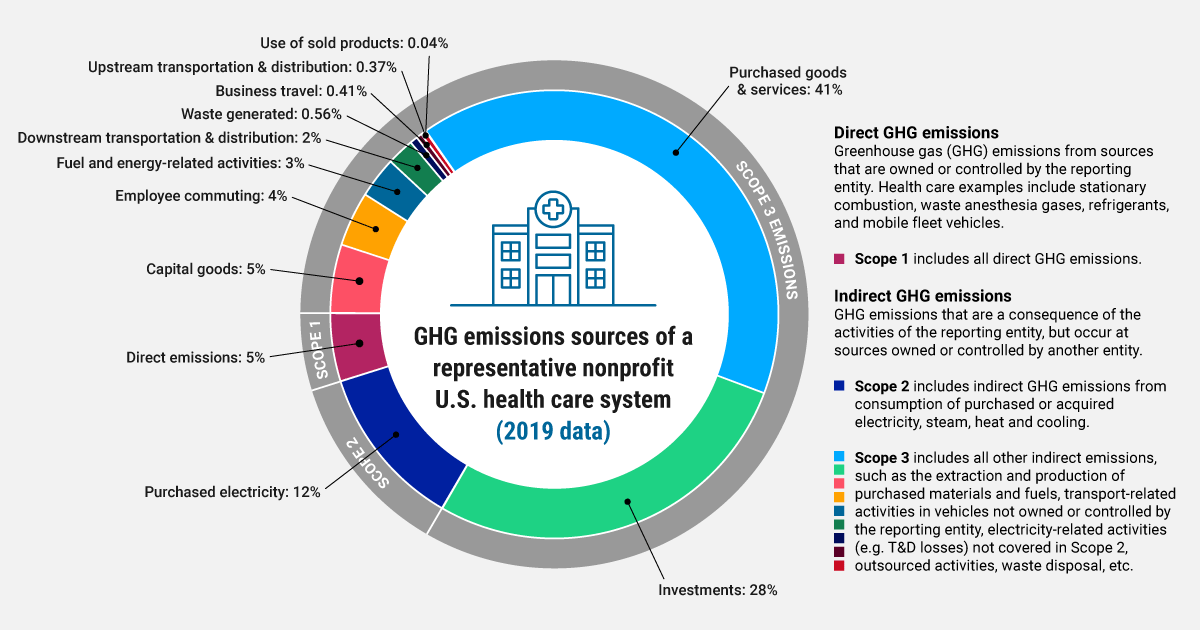This tool provides a spend-based methodology for health systems and hospitals to calculate their Scope 3 greenhouse gas (GHG) emissions across all 15 GHG Protocol categories. The accompanying How-to Guide provides a step-by-step process for accounting for a health care organization’s Scope 3 GHG emissions.
Scope 3 emissions are all GHG emissions within the organization’s value chain, representing the 15 GHG Protocol Categories not included in Scope 1 or 2. These emissions are considered “indirect” because although they occur within an organization’s value chain, they are outside of an organization’s direct control. It is critical for health care facilities to understand their Scope 3 emissions because these emissions make up 82% of the health sector footprint in the US.
Key benefits of completing a Scope 3 inventory include:
- identifying and managing risks in an organization’s value chain
- the ability to set credible and comprehensive decarbonization goals across all scopes of emissions
- helping multiply climate impact by decarbonizing across an organization’s value chain, from suppliers and distributors to patients and staff
Impact of Scope 3 emissions
The percentage of Scope 3 emissions will vary across facilities and health systems, but Scope 3 emissions typically account for the largest portion of total emissions. The pie chart below shows a GHG inventory from a U.S. nonprofit health care system that includes all relevant activities in Scope 1, 2, and 3. Scope 3 emissions make up 83% of this footprint.

Data source: ENGIE Impact analysis
Calculate your Scope 1 and 2 emissions
For calculating the Scope 1 and Scope 2 emissions for your organization, we recommend using the Climate Impact Checkup tool, an online calculator with built-in emission factors.
